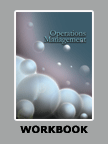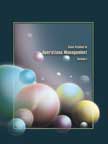Six Sigma: A Tool to Increase Customer Satisfaction at Bank of America




|
|
ICMR HOME | Case Studies Collection
Case Details:
Case Code : OPER052
Case Length : 14 Pages
Period : -
Organization : -
Pub Date : 2005
Teaching Note :Not Available
Countries : -
Industry : -
To download Six Sigma: A Tool to Increase Customer Satisfaction at Bank of
America case study
(Case Code: OPER052) click on the button below, and select the case from the list of available cases:

Price:
For delivery in electronic format: Rs. 300;
For delivery through courier (within India): Rs. 300 + Rs. 25 for Shipping & Handling Charges
» Operations Case Studies
» Case Studies Collection
» ICMR HOME
» View Detailed Pricing Info
» How To Order This Case
» Business Case Studies
» Case Studies by Area
» Case Studies by Industry
» Case Studies by Company
Please note:
This case study was compiled from published sources, and is intended to be used as a basis for class discussion. It is not intended to illustrate either effective or ineffective handling of a management situation. Nor is it a primary information source.
|
|
<< Previous
"Bank of America, using its emphasis on the customer and
Six Sigma, has been successful over the past three years in enhancing our
ability to put the right customer in the right products at the right price. Bank
of America is committed to continuing to improve service excellence, continuing
to invest in our future and continuing to innovate to respond to customer
needs."1
- Kenneth D. Lewis, Chairman and CEO, Bank of America
Corporation in 2004.
Introduction
|
In 2004, with revenues of $49.6 billion and profit of $14.1 billion, the
California-based Bank of America Corporation (BoA) was the fifth most profitable
company in the world and the second most profitable banking institution (Refer
Exhibit I for facts about BoA)2.
BoA provided full-service banking in 29 states and in Washington, D.C. in the US
and had operations in 30 countries worldwide.
The company performed its banking activities under three subsidiaries - Bank of
America National Association (Bank of America, N.A.), Bank of America, N.A.
(USA), and Fleet National Bank3 (Fleet).
|
|
BoA had four major business segments - Global Consumer and Small Business
Banking, Global Business and Financial Services, Global Capital Markets and
Investment Banking, and Global Wealth and Investment Management (Refer
Exhibit II for more information on Business Segments).
|
|
BoA was formed in 1998 as a result of a series of mergers and acquisitions
(Refer Exhibit III for Background of BoA). This inorganic growth strategy
helped the company in enlarging its customer base but it failed to generate
customer satisfaction and retention. As a result, the bank had been
recording low customer delight scores4
which reflected the low quality of service being provided. On January 24,
2001, Kenneth D. Lewis (Lewis) was appointed as the Chairman and CEO of BoA.
Under Lewis, BoA adopted an organic growth strategy. He focused on providing
high-quality service to customers and enhancing their satisfaction and
retention. Lewis adopted the Six Sigma quality initiative in the year 2001
(Refer Exhibit IV for a conceptual note on Six Sigma). |
Six Sigma: A Tool to Increase Customer Satisfaction at Bank of America
- Next Page>>
|
|



